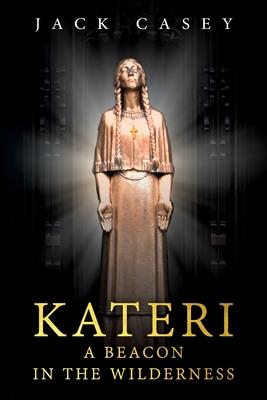Orphaned, scarred, and nearly blinded by the white man's smallpox (1660), a young Mohawk girl lives quietly in her uncle's longhouse. As chief of the Turtle Clan, her uncle Cold Wind leads warriors to resist invasions of the French. Tekakwitha (meaning "she who gropes her way" due to her poor eyesight) perfects skills of embroidery and wampum-weaving. Eruptions of war and the treatment of prisoners trouble and sadden her, but she keeps her sorrow to herself. Her silent endurance and humility hide a strong will, and against great pressure, she refuses her uncle's command that she marry.
Kryn, a half-Dutch warrior chief, commissions an embroidered ceremonial robe and a wampum belt to the seal the peace with the governor of New France and Tekakwitha accompanies a large flotilla of Iroquois canoes to Quebec (1666). The fragile peace they achieve soon unravels and Marquis de Tracy marches twelve hundred soldiers against the Mohawk nation, burning their villages and their stores of corn. Tekakwitha and her clan must flee into the forest to live on what they can kill in the hunt.
A new attempt at peace brings Jesuits to Tekakwitha's rebuilt village and she is fascinated with these mild men, these "blackrobes." In open defiance of her uncle she learns "the Prayer" and on Easter Sunday, 1676 she is baptized "Kateri" (Catherine). Her uncle's persecution escalates, and many villagers ridicule her for her faith. Meanwhile, Kryn has converted and every summer he leads converts to the Mission of St. Francis Xavier, across the St. Lawrence River from Montreal. In a daring escape (1677), Kateri travels to the mission where she encounters another spiritual refugee Father Claude Chauchetire.
Their connection is immediate and strong. Father Claude recognizes Kateri's mysticism and devotion, and he gently guides her to higher levels of spirituality. Kateri inspires him with her purity and holiness, and he is able at last to banish his lifelong doubts. Throughout the mission, Kateri's reverence and humility impress people from all nations, Algonquins, Hurons, Oneidas, and Abenaki. But the fasting and penances Kateri inflicts on herself cause her health to fail. After Father Claude witnesses Katei's deathbed transfiguration (1680), and she appears to him in visions, he dedicates himself to her "cause," painting her portrait, writing her biography, and curing the sick with her relics.
Marquis Denonville mounts an expedition (1687) to punish the Seneca and capture the lucrative fur trade away from the English. He enlists Kryn to supply two hundred native warriors. The Seneca campaign backfires when Denonville kidnaps and enslaves 51 Iroquois chiefs. The Iroquois take revenge in the bloody Lachine massacre, but the mission is miraculously spared. Father Claude foresaw this blessing in one of Kateri's visitations, and he now convinces others that she is the "Genevieve of New France." He insists that her remains be interred in the mission chapel, where they rest today in a marble sarcophagus, near the famous portrait he painted. For three centuries, her influence has spread throughout the world. She was beatified in 1980, and following the miraculous cure of a Seattle boy, the Catholic Church canonized Kateri Tekakwitha as the first Native American saint October 21, 2012.
